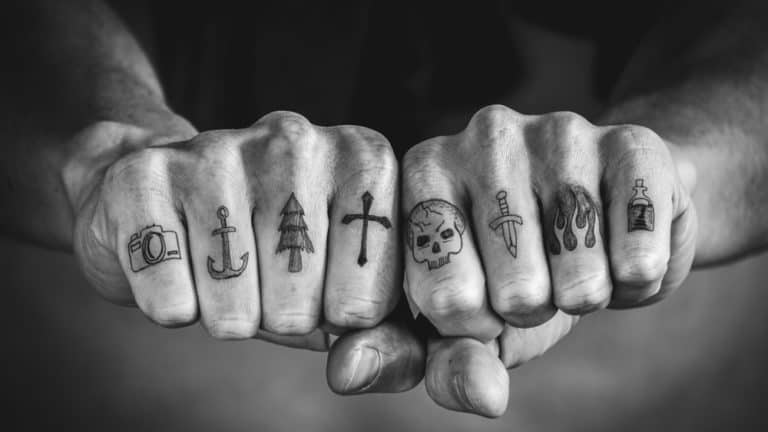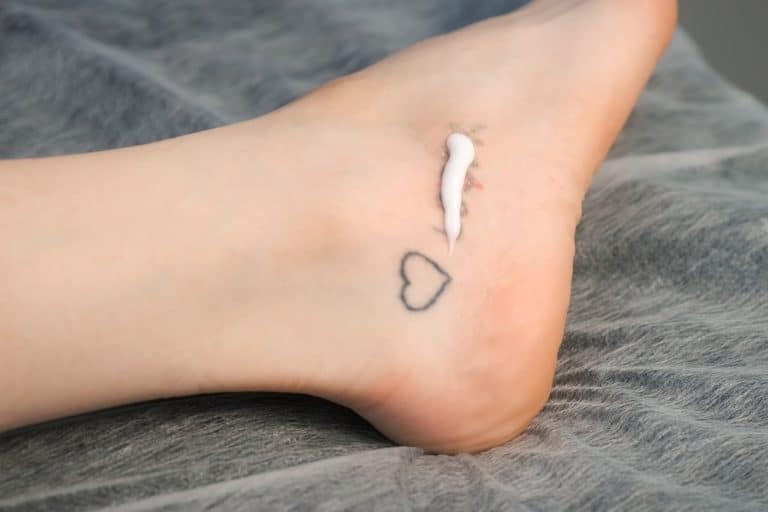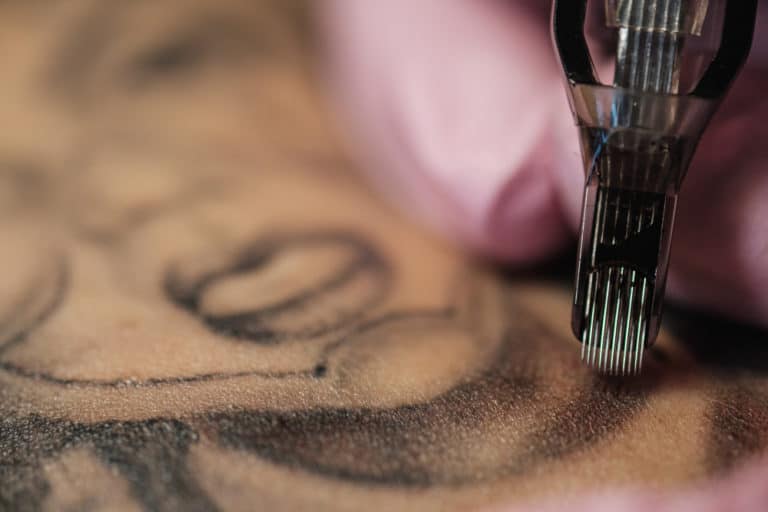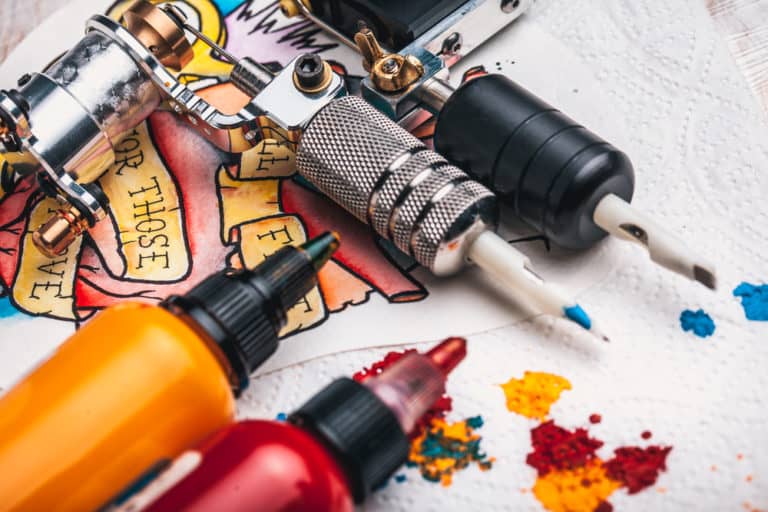Do Surgeons Try To Avoid Cutting Through Tattoos?
Tattoos are a part of a person’s identity. Even the spur-of-the-moment body art decisions tell a story, serving as a testament to our history. Many spend at least a year considering a tattoo, finding the right artist, and pouring over design options. Plus, awesome tattoos are an investment, one that requires saving up. Thus, nobody wants to see their body art destroyed by the surgeon’s knife.
Most surgeons try to avoid cutting through tattoos. Surgeons that can’t avoid them attempt to use minimally disruptive methods and try to stitch them back symmetrically. However, it is impossible for the surgeon to avoid damaging a tattoo in some situations.
Surgeries fall into two broad camps: emergency and elective. Emergency surgeries are often to save your life. Consequently, there is often little to no discussion beforehand; you might not even meet your surgeon until after the procedure. But elective surgeries such as having a torn ACL repaired provide opportunities to talk to your surgeon in advance about your concerns, including tattoos.
Why Surgeons Are Trying Not To Cut Tattoos
Modern surgeons are trying to avoid cutting tattoos. Sometimes it is impossible to miss the tattoo entirely, but most will try to minimize the amount of damage done to the art. However, this was not always the case. History is full of people with prominent scars and ruined tattoos after surgery. But these stories are becoming rarer due to two factors:
- Surgeons’ growing awareness to consider a patient’s mental health
- Technological advances
Research Has Shown Surgeons That Tattoos Matter To Mental Health
Surgeons who cared little about the marks they left behind used to be common. The attitude was, “I saved your life, be grateful,” or “Stop being so vain; at least you got it fixed.” People with tattoos were especially vulnerable due to mainstream judgment about people who got body art.
However, two significant changes in social attitudes have left most surgeons much more sensitive to the lasting mark of their knives.
The first is that social acceptance of tattoos has expanded. Nowadays, many doctors also have body art and modifications. In addition, a study released in 2018 showed patients trusted physicians with body art as much as those that didn’t display any. Thus, a significant number of surgeons these days have tattoos and wouldn’t want theirs cut, either.
The other social change is surgeons becoming more aware of the mental health impact of disfiguring marks, including ruining a tattoo. There have even been studies on the distress caused by “tattoo disruption” during surgery. For example, the medical recommendation of a 2009 study read, “Tattoos should be avoided where possible by alternative port site placement.”
The growing awareness means that surgeons try to avoid cutting through a tattoo. When this can’t be avoided, surgeons will attempt to restitch a person as nicely as possible, trying to realign the body art.
For elective surgery, it is best to discuss the matter in advance. In some cases, the surgeon knows there is no way to avoid it. In these cases, some surgeons offer various options so patients can decide what type of cut or disruption they prefer. In some instances, the surgeon might be able to cut and tuck the tattoo away so a person could get it redone rather than try to have an artist fix mangled ink.
Medical Advances Help Surgeons Avoid Tattoos
Surgery techniques have come a long way, especially since laparoscopic surgery became increasingly popular. This minimally invasive surgery technique has grown in availability due to greater access to better and smaller cameras and surgical tools and clearer and more defined imagery.
Laparoscopic surgery allows surgeons to minimize marks on the body, including on tattoos. Where possible, surgeons will try to avoid the tattoo, adjusting entry positions. If avoiding the tattoo is possible, they will attempt to do it where the entry point will be the least noticeable.
Can I Get A Tattoo Before Surgery?
Patients should avoid getting a tattoo near the time of an upcoming surgery. Even if the new tattoo is nowhere near the surgical site, it still raises the risks of infection. A tattoo is an open wound, and while surgeons and their teams do as much as possible to create a sterile environment, hospitals are full of germs.
In addition, having a tattoo and surgery right after each other is hard on the body. Getting a tattoo is a physically demanding experience. The body is required to undergo 4-6 weeks of intense healing, all while trying to avoid infection. Surgeries are also a physically demanding experience. Thus, you ideally want to be fully healed from one procedure before undergoing another.
Can A Surgical Scar Be Tattooed?
It is challenging to tattoo over scarred skin, but it can be done in most cases. Finding a tattoo artist with experience inking scars and damaged skin is essential. These tattoo artists are in the best position to give you your options.
Scaring comes in a variety, and not all can deal with the demands of a needle. In addition, scars all respond differently to ink. Some types have a higher chance of bleeding color; others won’t hold ink at all. But an experienced tattoo artist can give you realistic expectations for your type of scar, including if it is the kind that might have higher sensitivity.
Most scars don’t do well with detailed line work. For scars that don’t hold ink well or at all, many artists will try to incorporate them into a design in ways that minimize their visibility or make them a flattering feature to the piece.
However, it is essential that a scar is fully healed before having it tattooed. Most scars take a least a year before they can withstand the needle. However, for severe injuries, a person might need to wait for as long as 3 to 5 years before getting inked.
Conclusion
Modern surgeons try to avoid wrecking a tattoo. These days, surgeons are more sensitive to the distress caused when art is cut. So when surgeons can’t avoid cutting through a tattoo, they try to minimize the disruption to the area. Thanks to advanced technology and surgical techniques, it is easier than ever for surgeons to reduce the visible marks of their work.
Some of my favorite designs, tattoo books, and aftercare products, selected for you
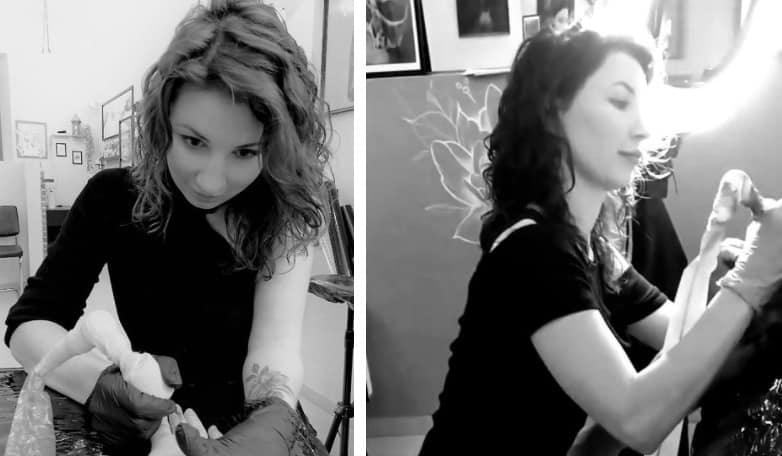
Thank you for reading my article, I hope that you have found it helpful. If you would have trouble finding ideas for your tattoo, wonder what is meaning of design that you have found or what to buy for aftercare, to make sure that your tattoo will be healing quickly and easily, here are some of my favorite products in one place, hope that this will also help.
Design and tattoo ideas
For some ideas you can have a look at those 3 books with hundreds of designs that I use with my clients, they are available on Amazon for Kindle or in classic, paper version (links below):
- Great Book of Tattoo Designs, Revised Edition: More than 500 Body Art Designs (Fox Chapel Publishing) Fantasy, Celtic, Floral, Wildlife, and Symbol Designs for the Skin by Lora Irish
- The Big Book of Small Tattoos – Vol.1: 400 small original tattoos for women and men by Roberto Gemori
- Tiny Tattoos: Over 1,000 Small Inspirational Artworks by Rebecca Vincent.
Tattoo meaning
If you would like to read more about the meaning of different tattoo styles and designs before you will decide what you would like to have, I can recommend a book that was really useful for me when I was starting my tattoo adventure – it’s “Conscious Ink: The Hidden Meaning of Tattoos” by Lisa Barretta (through the link you can find it on Amazon for around $10).
Tattoo aftercare
The skin at the tattoo site often dries out. To prevent it and speed up healing for my clients, I usually recommend one of those tattoo aftercare balms (you can find them on Amazon):
References
- https://www.reddit.com/r/tattoos/comments/3ju4kr/having_surgery_on_a_tattooed_location/
- https://www.dovepress.com/tattoo-preservation-during-surgical-procedures-peer-reviewed-fulltext-article-OAS
- https://melmagazine.com/en-us/story/as-tattoos-become-more-popular-surgeons-are-altering-their-techniques
- https://www.healthline.com/health/body-modification/tattoo-over-scar
- https://www.quora.com/When-performing-a-surgery-do-surgeons-try-to-avoid-cutting-through-tattoos-Im-working-on-a-full-sleeve-right-now-and-Im-scared-that-if-I-shatter-my-wrist-on-my-tattooed-side-that-they-will-cut-through-my-tattoos-to-put-a-plate-in
- https://pubmed.ncbi.nlm.nih.gov/18437475/


